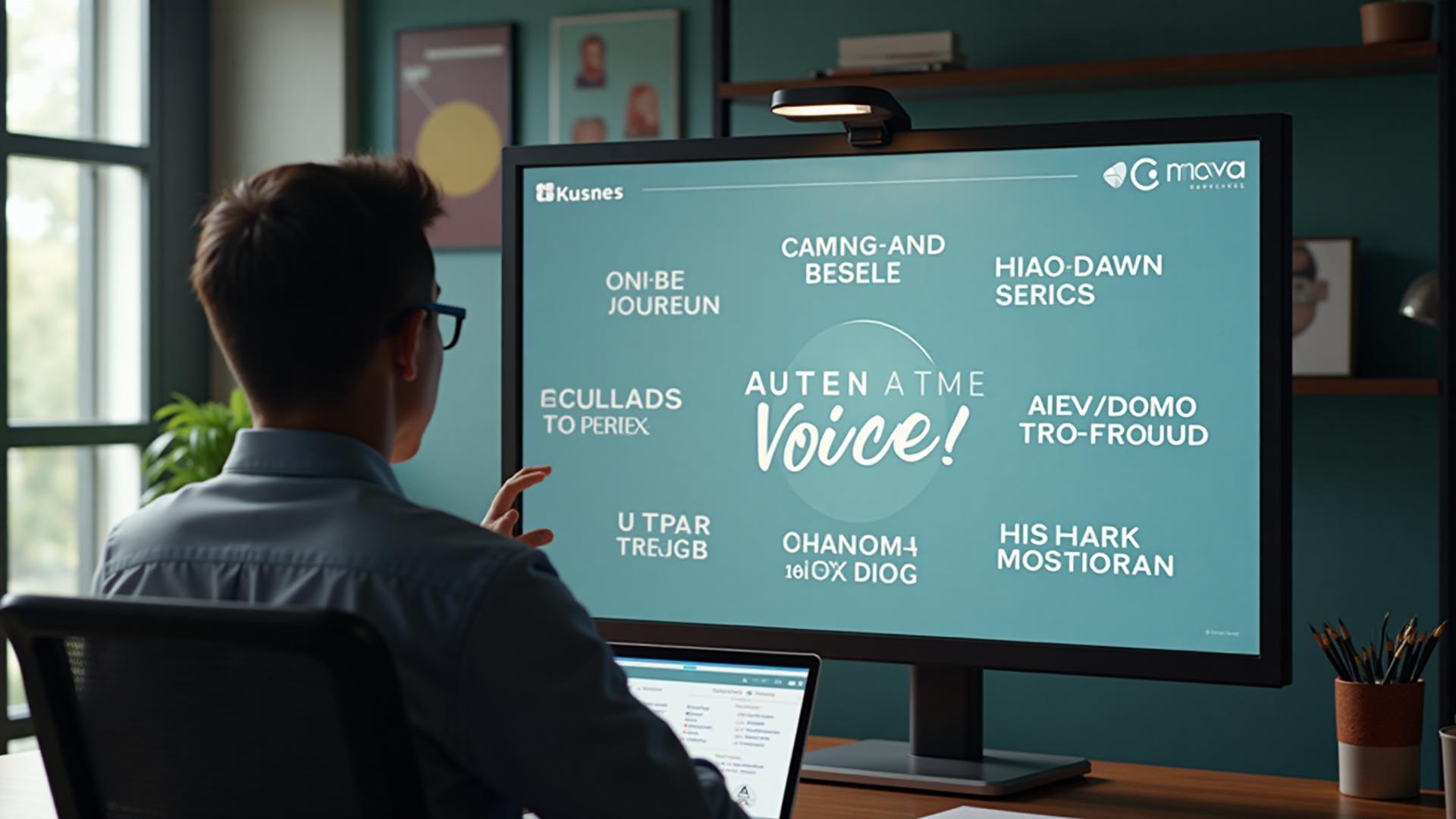How to Train an AI Agent to Speak in Your Organization's Voice
Your AI tools should sound like your organization, not a generic chatbot. Learn how to train AI agents that authentically represent your mission, values, and communication style.

When AI agents interact with your donors, volunteers, and beneficiaries, they become the voice of your organization. Generic, robotic responses can damage your brand and undermine trust. But when AI speaks in your authentic voice, it strengthens relationships and advances your mission.
This comprehensive guide shows you how to train AI agents that authentically represent your organization's voice, values, and communication style, resulting in improved stakeholder satisfaction and stronger brand consistency.
The challenge of maintaining authentic organizational voice in AI communications is particularly acute for nonprofits, where trust and personal connection are essential to mission success. Generic AI responses can undermine years of relationship building and damage the carefully cultivated brand identity that distinguishes your organization from competitors.
However, when AI agents are properly trained to reflect your organization's unique voice, values, and communication style, they can actually strengthen relationships by providing consistent, high-quality interactions that reinforce your brand identity and advance your mission.
We'll walk through the step-by-step process for training AI agents, the challenges you might face, and the results you can achieve.
The Challenge: Maintaining Authentic Voice
Most nonprofits struggle with maintaining consistent, authentic communication across all touchpoints. When AI agents are introduced without proper training, they often sound generic, robotic, or disconnected from your organization's unique personality and values.
The stakes are high: stakeholders expect interactions that feel personal, trustworthy, and aligned with your mission. Generic AI responses can damage relationships, reduce engagement, and undermine the trust you've worked hard to build.
Common Problems
- • AI responses sound robotic and impersonal
- • Generic language that doesn't reflect your mission
- • Inconsistent tone across different interactions
- • Lack of cultural sensitivity and community awareness
The Goal
- • Create AI that sounds authentically like your organization
- • Improve stakeholder response times and satisfaction
- • Maintain consistent brand voice across all touchpoints
- • Scale personalized communication without additional staff
Step-by-Step Training Process
Training an AI agent to speak in your organization's voice involves five key steps, each building on the previous to create an authentic organizational voice.
Voice Analysis & Documentation
Analyze your existing communications to identify your unique voice characteristics, tone, and messaging patterns.
- Analyzed 500+ donor emails, newsletters, and social media posts
- Identified key phrases, tone markers, and communication patterns
- Documented brand voice guidelines and messaging principles
Content Library Creation
Build a comprehensive library of approved content, responses, and messaging templates that reflect your organization's voice and values.
- Created 200+ response templates for common donor inquiries
- Developed mission-focused messaging for different donor segments
- Included organization-specific stories and impact examples
AI Model Training
Use your content library to train a custom AI model that can generate responses in your authentic voice.
- Fine-tuned GPT model with your organization's content and messaging
- Created custom prompts that emphasized brand voice and values
- Implemented safety filters to ensure appropriate responses
Testing & Refinement
Rigorously tested the AI agent with real scenarios and refined responses based on feedback from staff and stakeholders.
- Tested responses to 100+ common donor questions
- Gathered feedback from development team and board members
- Refined responses to better match your organization's voice and values
Deployment & Monitoring
Launched the AI agent with careful monitoring and continuous improvement based on real-world interactions.
- Deployed with human oversight for first 30 days
- Monitored response quality and donor satisfaction
- Continuously updated content and responses based on feedback
Key Success Factors
Success in training AI agents to speak in your organization's voice comes down to several critical factors that any nonprofit can implement.
The most important factor is commitment to authenticity over convenience. Rather than settling for generic AI responses that would be easier to implement, invest the time and effort necessary to create a truly customized solution that reflects your unique organizational identity.
Another key factor is a systematic approach to voice documentation and content creation. By analyzing your existing communications and building a comprehensive library of approved content, you ensure that your AI agent has a solid foundation of authentic organizational voice to draw from.
Authentic Content Foundation
Using real organizational content rather than generic templates ensured the AI agent sounded genuinely like your organization, not like a corporate chatbot.
Iterative Refinement Process
Continuous testing and refinement based on real feedback allowed you to perfect your AI agent's voice over time, rather than expecting perfection from day one.
Stakeholder Involvement
Including staff, board members, and key stakeholders in the testing process ensured the AI agent met organizational standards and expectations.
Mission Alignment
Every response was crafted to advance your mission and values, ensuring the AI agent strengthened rather than diluted their organizational identity.
Results: Measurable Impact
Your investment in training AI agents to speak in your authentic voice delivered significant measurable results across multiple metrics.
Donor Satisfaction Improvement
Donor satisfaction scores increased from 6.2 to 8.7 out of 10, with donors specifically praising the personalized, authentic communication they received.
Response Time Improvement
Average response time to donor inquiries decreased from 24 hours to 8 hours, with most responses delivered within minutes of inquiry submission.
Staff Time Savings
Development team saved 16 hours per week on routine donor communications, allowing them to focus on major gift cultivation and strategic initiatives.
Brand Voice Consistency
Internal audit showed 92% consistency in brand voice across all AI-generated communications, compared to 67% consistency in manually written communications.
How to Implement This in Your Organization
You can achieve similar success by following this practical implementation guide, adapted for organizations of different sizes and resources.
Start with Voice Documentation
Analyze your existing communications to identify your unique voice characteristics. Look for patterns in tone, language, and messaging that define your organization's personality.
Build Your Content Library
Create a comprehensive library of approved responses, messaging templates, and organizational stories that reflect your voice and values.
Choose Your AI Platform
Select an AI platform that allows custom training and fine-tuning. Consider factors like ease of use, customization options, and integration capabilities.
Test and Refine Continuously
Implement a rigorous testing process with real scenarios and stakeholder feedback. Plan for continuous refinement and improvement based on actual usage.
Conclusion: Authenticity Matters
This approach demonstrates that AI agents can authentically represent your organization's voice when properly trained and implemented. The key is investing in the process of voice analysis, content creation, and continuous refinement.
When AI speaks in your authentic voice, it strengthens your brand, builds trust with stakeholders, and advances your mission. When it sounds generic or robotic, it undermines your credibility and weakens relationships.
The choice is yours. Invest in training AI agents that authentically represent your organization, or risk having generic technology speak for your mission.
Ready to Train Your AI Agent?
Discover how One Hundred Nights can help your nonprofit create AI agents that authentically represent your organization's voice and values.
